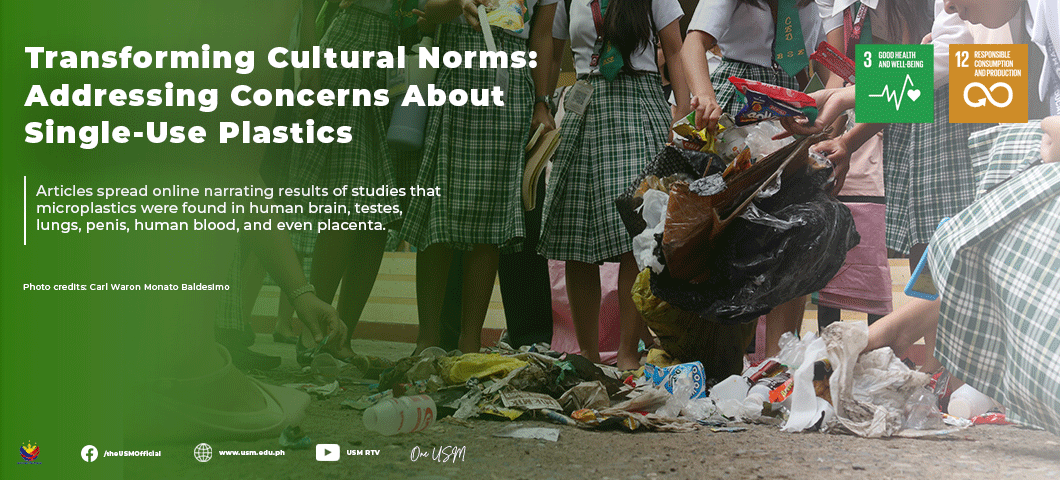
USM Hosts PRC-Accredited Data Analytics Training by UPLB Experts
September 22, 2024
ATTENTION 2022 USM GRADUATES
September 24, 2024
Articles spread online narrating results of studies that microplastics were found in the human brain, testes, lungs, penis, human blood, and even placenta.
According to a report published on The Times Entertainment of India website in September 2024, tiny plastic particles were discovered in the nasal tissues of human cadavers. Further, findings in a September 2024 report by UPI Health News in Washington, DC revealed the presence of microplastics in the human brain. Scientists from Brazil and Germany conducted a study where microplastics were detected in the olfactory bulb—the brain’s center for smell—in 8 out of 15 autopsied adults. These discoveries underscore growing concerns about the infiltration of microplastics into vital human organs.
If these microplastics and nanoplastics can enter the brain, they can also reside in the heart, kidney, liver, and other organs which may result in abnormalities and even death.
In an article posted by the Department of Science and Technology (DOST) in February 2024, microplastics were discovered in the intestines of bangus (milkfish). The DOST-National Research Council of the Philippines (DOST-NRCP) funded study reported that out of 383 suspected particles found in 30 pieces of bangus individuals caught from selected sites in Mindanao, 235 (61.36%) were confirmed to be microplastics. These findings highlight the growing concern over plastic pollution and its impact on marine life and food safety.
Microplastics are tiny plastic particles, typically less than 0.2 inches (5 millimeters) in size, or about the size of a pencil eraser. Scientists say that research on microplastics is still developing, and tools to assess their toxicity in humans are being refined. Establishing protocols for toxicity thresholds is essential to understanding their impact on human health, although their potential harm is becoming increasingly evident.
But how can these microplastics enter the human body in the first place?
Microplastics can enter the human body through the contaminated food and beverages that we consume. In an article published by Times Entertainment of India, five food sources with the highest concentrations of microplastics were identified. These are sugar, salt, tea bags, rice, seafood, and bottled water.
So, what can we do?
Given the pressing concerns surrounding microplastics, we must reconsider our lifestyle choices and consumption habits. In the Philippines, there is a distinct cultural tendency to purchase products in small quantities. This “sachet economy” has become ingrained in daily life but significantly contributes to the nation’s plastic pollution problem.
It is prudent to utilize cooking utensils made from wood, silicone, and stainless steel. Rather than relying on single-use plastics (SUPs), it is advisable to transition to bamboo cutlery, metal water bottles, and reusable cloth bags. For food storage, opt for metal and glass containers. Consuming food packaged in SUPs increases the risk of ingesting microplastics; therefore, preparing home-cooked meals can help mitigate this risk. Lastly, we must always drink filtered water.
The University of Southern Mindanao (USM) is strengthening its campaign to eliminate Single-Use Plastics (SUPs) on campus, which commenced on March 28, 2019. USM is dedicated to promoting environmental preservation and enhancing the overall health and well-being of its community.
